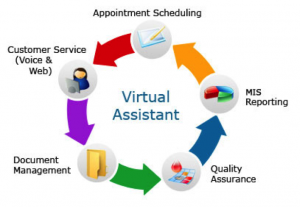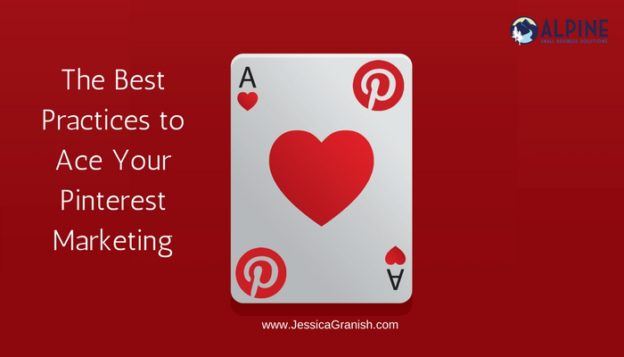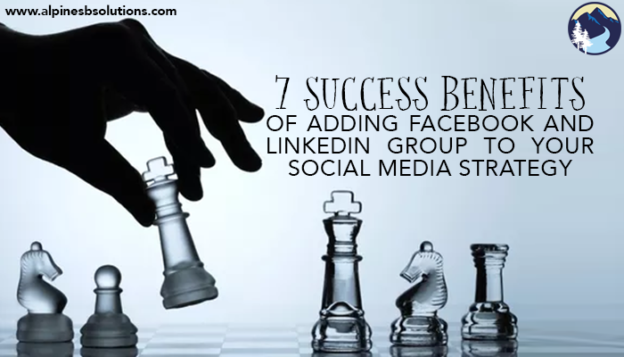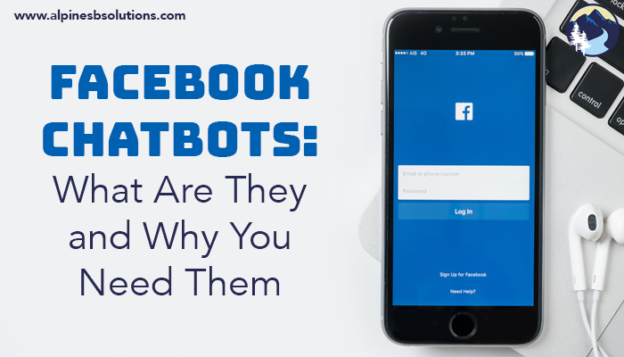25 Ways A Virtual Assistant Can Help Grow Your Business
 2013 is a year for huge goals and even bigger execution. Just as the saying “It takes a village to raise a child”, the same goes for the growth of your business. To grow to the next level you need to enlist a team and practice the art of teamwork to help build a meaningful business. The problem is many new businesses do not have a full bank account and are often times working a second job or running their businesses off their credit cards. They just don’t have gobs of money to throw around….YET!
2013 is a year for huge goals and even bigger execution. Just as the saying “It takes a village to raise a child”, the same goes for the growth of your business. To grow to the next level you need to enlist a team and practice the art of teamwork to help build a meaningful business. The problem is many new businesses do not have a full bank account and are often times working a second job or running their businesses off their credit cards. They just don’t have gobs of money to throw around….YET!
When I first started my own business, I too was working a second job and was just taking on small administrative assistant type of projects here and there to help support my family and my crazy shoe fetish. After a year or two went by of doing this, I realized that there was a viable market for what I was already offering. At this time, way back when, the term “Virtual Assistant” was not a main stream term. When I said Virtual Assistant, I would often get the cocked headed looks, just like what a puppy might do the first time it hears a peculiar sound. People would often times give me that tilted head look and followed up with many questions on what a Virtual Assistant actually does. To this day, 9+ years later, people are still intrigued what a Virtual Assistant does and how they can help their business grow. You may still be asking yourself what the heck is a Virtual Assistant exactly and if you need further explanation, please check it out here.
 So, lets get to the nitty gritty and the real reason you have landed on this blog. My first guess why you are here is because you are a small business owner, entrprenuer, soloprenuer, momprenuer or a “preneuer” of some kind and are looking for ways to get everything done and still maintain a healthy work/life balance. You also have likely heard somewhere along the way that if you are in business for yourself you really should look at partnering and aligning yourself with a top-notch Virtual Assistant. Because there is no way you can do it all on your own, stay sane, continue to love what you do and most importantly still be profitable. You know what? Whoever they are, they were right, you can’t do it all on your own.
So, lets get to the nitty gritty and the real reason you have landed on this blog. My first guess why you are here is because you are a small business owner, entrprenuer, soloprenuer, momprenuer or a “preneuer” of some kind and are looking for ways to get everything done and still maintain a healthy work/life balance. You also have likely heard somewhere along the way that if you are in business for yourself you really should look at partnering and aligning yourself with a top-notch Virtual Assistant. Because there is no way you can do it all on your own, stay sane, continue to love what you do and most importantly still be profitable. You know what? Whoever they are, they were right, you can’t do it all on your own.

Remember at the beginning of this blog I referenced “it takes a village to raise a child” well it holds true for your business as well. I am not going to lie, a Virtual Assistant can be your saving grace and best friend. It truly is a method to help you stay on the right path and to take the burden of every day mundane tasks off your to-do list and fill your action item list with revenue generating work that you have a passion for. I mean the whole reason you went into business for yourself was because you have a passion for something, right! You never want to lose that zest! So to hold onto that zestiness, a Virtual Assistant is a great resource and guide to help your business grow to the next level, while still staying in love with what you do and as a bonus, stay within your budget. The best part is that as a Virtual Assistant we get it…we too are entrepreneurs offering a service to other entrepreneurs. We get what it takes to run a business.
To demonstrate what a great asset a Virtual Assistant can be, my team and I have compiled a list of tasks and projects that a online business manager can do to help you and your business grow. All this added value will generally only cost pennies on the dollar compared to a traditional assistant that requires an office, insurance, supervision, management, taxes and legalities…just to name a few.
How can a virtual assistant help your business grow? Well check out these 25 ways a Virtual Assistant can help grow your business.
- Business Plan Development
- Small Business Coaching and Guidance
- Marketing Plan Development and Management
- Project Coordination & Management
- Event Coordination & Management (Teleseminar, Webinars, Seminars, Retreats, and other live events)
- Social Media Marketing and Management
- Search Engine Optimization (SEO)
- Keyword Discovery
- Competitor Analysis
- Writing of Press Releases
- Writing of SEO rich Blogs
- Customer and Client Care and Support
- Online and Offline Research
- Word Processing and Data Entry
- Prepare and Create PowerPoint Presentations
- Update and manage your website
- Copywriting
- Proofreading
- Graphic Design
- Create and Prepare online Opt In Gifts
- Create and Prepare Auto Responder Series
- Travel Arrangements & Logistics
- Affiliate Membership Site Setup
- Online Store Management
- Executive Scheduling
AND SOOOOO much more! If a task or service is not listed above, just ask. This list is just the tip of the iceberg. A well oiled Virtual Assistant who is a leader in their field will always cater to their clients needs and come up with the best solution for you and your business. If you are a over tired, over worked and unbalanced entrepreneur that is looking for more information, look no further and reach out and contact us today.





 A soft launch is a marketing effort that intentionally limits its scope to a smaller percentage of the target audience. The goal is to test the product among the small audience and tweak it as necessary before the product is available to everyone. The audience can be a small group within your target audience or a small group whose demographics are similar to your target audience (such as product testing in Canada, New Zealand, or Australia).
A soft launch is a marketing effort that intentionally limits its scope to a smaller percentage of the target audience. The goal is to test the product among the small audience and tweak it as necessary before the product is available to everyone. The audience can be a small group within your target audience or a small group whose demographics are similar to your target audience (such as product testing in Canada, New Zealand, or Australia). it’s released to everyone. Staff members can really focus on finding changes that need to be made because they won’t be spending as much time focused on various marketing efforts. This is really still a testing phase. It allows you to work out some of the kinks before you go big!
it’s released to everyone. Staff members can really focus on finding changes that need to be made because they won’t be spending as much time focused on various marketing efforts. This is really still a testing phase. It allows you to work out some of the kinks before you go big! An effective campaign for a hard launch, in contrast, could take several weeks or even months. On the flip side, the amount of time it takes to see results comes in much quicker with a hard launch due to the expanded marketing efforts. Of course, in the long run, a soft launch does take longer because it’s followed by a hard launch. But when comparing a soft launch to a hard launch, a soft launch is much shorter.
An effective campaign for a hard launch, in contrast, could take several weeks or even months. On the flip side, the amount of time it takes to see results comes in much quicker with a hard launch due to the expanded marketing efforts. Of course, in the long run, a soft launch does take longer because it’s followed by a hard launch. But when comparing a soft launch to a hard launch, a soft launch is much shorter. Different marketing needs will call for different strategies. For newer products, you will likely want to do a soft launch. This will allow you to gather valuable information on your target audience to better tailor the marketing efforts when you introduce the product. For products you are less confident in, a soft launch also works well. You’ll gain confidence after seeing how the product performed in the smaller audience and know you made the changes needed for it to be ready for a full audience launch. For a product that will be launched in a more competitive market, a hard launch will be better since it allows for a wide marketing effort.
Different marketing needs will call for different strategies. For newer products, you will likely want to do a soft launch. This will allow you to gather valuable information on your target audience to better tailor the marketing efforts when you introduce the product. For products you are less confident in, a soft launch also works well. You’ll gain confidence after seeing how the product performed in the smaller audience and know you made the changes needed for it to be ready for a full audience launch. For a product that will be launched in a more competitive market, a hard launch will be better since it allows for a wide marketing effort.
 Ensure your website is mobile friendly. Busy shoppers purchase on their phone. A difficult to use app will lose you customers faster than people lose their diet resolutions at the company holiday party. Plug your url into
Ensure your website is mobile friendly. Busy shoppers purchase on their phone. A difficult to use app will lose you customers faster than people lose their diet resolutions at the company holiday party. Plug your url into  Pick a season’s greetings. Some audiences are offended with the use of “Merry Christmas” while others are equally offended by the lack of “Merry Christmas.” Know which greetings best suit your brand and your target audience. “Happy Holidays” is a safe bet since it recognizes the numerous celebrations.
Pick a season’s greetings. Some audiences are offended with the use of “Merry Christmas” while others are equally offended by the lack of “Merry Christmas.” Know which greetings best suit your brand and your target audience. “Happy Holidays” is a safe bet since it recognizes the numerous celebrations. Santa. An art supply store can organize a holiday card decorating workshop. Any store can throw a holiday party with a tree lighting and carol singing. Make a fun event, ideally connected to your business, to draw people to your store. They’ll be reminded of your great selection, which hopefully will get them thinking about crossing items off their shopping list with your products.
Santa. An art supply store can organize a holiday card decorating workshop. Any store can throw a holiday party with a tree lighting and carol singing. Make a fun event, ideally connected to your business, to draw people to your store. They’ll be reminded of your great selection, which hopefully will get them thinking about crossing items off their shopping list with your products.

 Strategic keyword integration helps optimize your pins. Scatter keywords throughout the image file names, pin descriptions, board names, and board descriptions.
Strategic keyword integration helps optimize your pins. Scatter keywords throughout the image file names, pin descriptions, board names, and board descriptions. Skip the highly promotional “buy this item” pins. These won’t perform well since using sales-y words like buy and sale anger the algorithm.
Skip the highly promotional “buy this item” pins. These won’t perform well since using sales-y words like buy and sale anger the algorithm. Pinterest requires you to “feed the beast.” The algorithm rewards consistency. It’s better to regularly pin rather than go on a one hour straight pinning spree. Aim for between
Pinterest requires you to “feed the beast.” The algorithm rewards consistency. It’s better to regularly pin rather than go on a one hour straight pinning spree. Aim for between
 exposed to a wide range of professionals you otherwise might not come into contact with. When they interact with your post, you can send them a friendly message to connect and discuss the topic further. It’s a more personable way to acquire new connections across cyberspace.
exposed to a wide range of professionals you otherwise might not come into contact with. When they interact with your post, you can send them a friendly message to connect and discuss the topic further. It’s a more personable way to acquire new connections across cyberspace. “discover” to bring up suggested groups. For
“discover” to bring up suggested groups. For  When posting in audience tailored groups, provide how-to articles, guides, and other pieces of information packed content. That’s the information they are looking for in these groups, and it will build your reputation in the groups as a leader.
When posting in audience tailored groups, provide how-to articles, guides, and other pieces of information packed content. That’s the information they are looking for in these groups, and it will build your reputation in the groups as a leader.

 The Facebook Chatbot allows companies to create responses with video, audio, GIFs, files, and text. This variety allows for a high amount of personalization to your company’s brand. The bot can be built by you or by Facebook’s bot creating partners. The bots are designed to learn as they go. The more they are used, the smarter they become.
The Facebook Chatbot allows companies to create responses with video, audio, GIFs, files, and text. This variety allows for a high amount of personalization to your company’s brand. The bot can be built by you or by Facebook’s bot creating partners. The bots are designed to learn as they go. The more they are used, the smarter they become. Customers adapted to this quick reply system, turning less and less to calling in and instead typing in their requests. This set the stage for Chatbots to take off. Customers already turn to the web for assistance. What’s changed is the company’s ability to reply with intelligent, pre-crafted responses.
Customers adapted to this quick reply system, turning less and less to calling in and instead typing in their requests. This set the stage for Chatbots to take off. Customers already turn to the web for assistance. What’s changed is the company’s ability to reply with intelligent, pre-crafted responses.
 Bear Grylls is a well-known adventurer, writer, and TV personality. In his show “Running Wild with Bear Grylls” he takes a new celebrity on an adventure, encountering
Bear Grylls is a well-known adventurer, writer, and TV personality. In his show “Running Wild with Bear Grylls” he takes a new celebrity on an adventure, encountering  Vince Lombardi is one of the greatest professional football coaches of all time, leading the Green Bay Packers to victory time and time again. You can get lost reading through a collection of his quotes, as each one is an inspirational landmine. When talking about coaching, he famously said “they call it coaching, but it is teaching. You do not just tell them…you show them the reasons.” Lombardi took the time to explain to his players the reasoning behind his choices and strategies, rather than simply yelling orders. This, arguably, helped improve the coach-player relationship, team cohesion, and the players’ motivation (especially when things got rough).
Vince Lombardi is one of the greatest professional football coaches of all time, leading the Green Bay Packers to victory time and time again. You can get lost reading through a collection of his quotes, as each one is an inspirational landmine. When talking about coaching, he famously said “they call it coaching, but it is teaching. You do not just tell them…you show them the reasons.” Lombardi took the time to explain to his players the reasoning behind his choices and strategies, rather than simply yelling orders. This, arguably, helped improve the coach-player relationship, team cohesion, and the players’ motivation (especially when things got rough). Miley Cyrus loves her fans so much that she has nicknamed them “Smilers” and makes sure to acknowledge them often, whether on tour or on
Miley Cyrus loves her fans so much that she has nicknamed them “Smilers” and makes sure to acknowledge them often, whether on tour or on  To say that the Kardashians have not been shy about exploiting their brands is like saying that fire is kind of hot. The Kardashian girls endorse clothing, makeup, perfume and more. What they know is that no business cycle lasts forever, so they are not shy about maximizing their potential while they can.
To say that the Kardashians have not been shy about exploiting their brands is like saying that fire is kind of hot. The Kardashian girls endorse clothing, makeup, perfume and more. What they know is that no business cycle lasts forever, so they are not shy about maximizing their potential while they can. Watching Geraldo Rivera bomb five tasks in a row was amusing and sad. Frankly, Geraldo’s ideas were good — 10 years ago, but did not resonate with company executives who were looking for forward thinking, innovative ideas that appeal to today’s consumers. Not to detract from his achievements, but Mr. Rivera thought that his past journalistic success would lead his team to winning each challenge; it did not. In fact, many younger people do not even know who he is. Geraldo is a forceful, strong-willed personality who does not take “no” for an answer. Maybe that’s the reason behind his success; however, when working with or leading a
Watching Geraldo Rivera bomb five tasks in a row was amusing and sad. Frankly, Geraldo’s ideas were good — 10 years ago, but did not resonate with company executives who were looking for forward thinking, innovative ideas that appeal to today’s consumers. Not to detract from his achievements, but Mr. Rivera thought that his past journalistic success would lead his team to winning each challenge; it did not. In fact, many younger people do not even know who he is. Geraldo is a forceful, strong-willed personality who does not take “no” for an answer. Maybe that’s the reason behind his success; however, when working with or leading a 
 A few decades ago, few people would have predicted that one of the top media companies in the US owns very little physical inventory or that one of the top taxi services owns no vehicles. But the founders of Netflix and Uber forever changed their industries with their creative thinking.
A few decades ago, few people would have predicted that one of the top media companies in the US owns very little physical inventory or that one of the top taxi services owns no vehicles. But the founders of Netflix and Uber forever changed their industries with their creative thinking. True. Entrepreneurs who overwork themselves and fail to regularly practice self-care end up prematurely aging. Just like people in other lines of work with those same poor habits prematurely age.
True. Entrepreneurs who overwork themselves and fail to regularly practice self-care end up prematurely aging. Just like people in other lines of work with those same poor habits prematurely age.